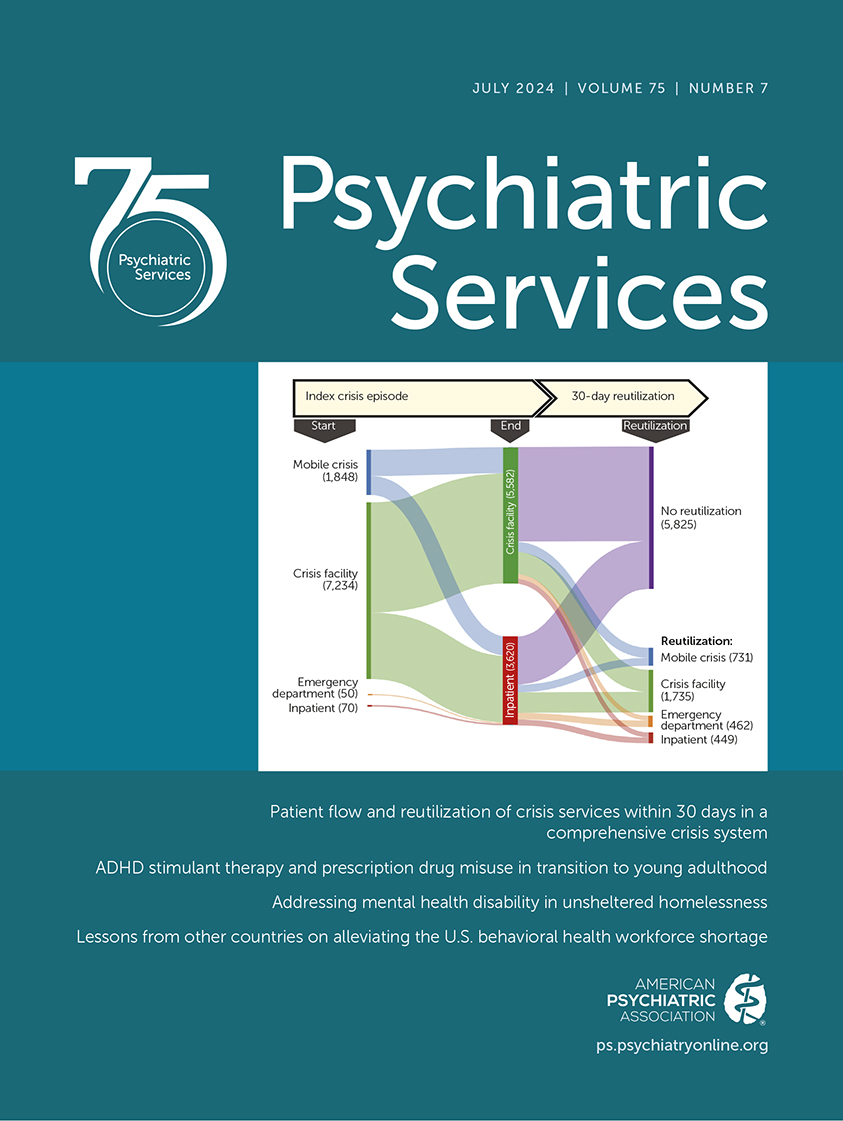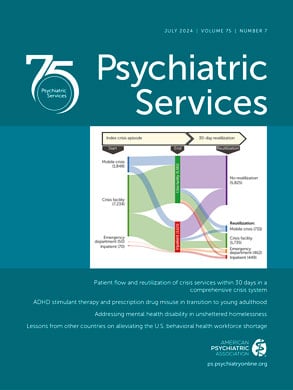Pope and colleagues’ article on 988 in this issue (
1) provides timely and important insights about how the 988 Suicide and Crisis Lifeline may provide a superior alternative to 911 for people experiencing a mental health crisis. Drawing on results from 15 focus groups across New York conducted with 76 participants, who included mental health service consumers and their families, service providers, and community members, the study’s ample qualitative data highlight many ways in which 988 could be beneficial and complementary to 911. Pope and colleagues rightfully conclude that
Research must keep pace with 988 implementation to ensure a detailed understanding of those whom 988 is serving, how 988 meets callers’ needs, whether it is possible to effectively transfer calls from 911 to 988, and the potential of 988 to connect people to a broad range of community-based services.
An additional area where research must keep pace is 988 financing. States/territories play an essential role in financing 988 implementation but differ in the financing models used and amounts funded. Financing is likely to affect 911–988 interoperability, staffing of 988 call centers, access to behavioral and social services to which people are connected after contacting 988, and ultimately 988’s overall success. High-quality financing data across all U.S. states/territories are essential to rigorous research. Although 988 and 911 have different goals and may meet different needs—as illustrated by Pope et al. (
1)—911 financing data and reporting may offer a model that can facilitate needed research for 988.
Almost all states/territories have adopted telecommunications fees to finance 911. As required by federal law, the Federal Communications Commission (FCC) submits a report annually to Congress on the use of this revenue and other aspects of 911 financing. The reports are publicly available (e.g.,
https://www.fcc.gov/general/911-fee-reports) and populated with data from an annual survey of U.S. states/territories with a response rate of nearly 100% and little missing data. State/territory-level variables in the reports include but are not limited to total 911 expenditures, including those from budget appropriations; total cost of providing 911 services; number of 911 call centers; number of staff at call centers, by full-time versus part-time; number of 911 contacts, by contact mode (i.e., landline, wireless, text); and oversight mechanisms for 911 fee spending. Such data can be used to systematically characterize the financing of 911 systems at the state/territory level over time and, if linked with other data sets, elucidate the effects of different 911 financing models.
Extant data on 988 financing across states/territories are far more limited. Like 911, federal law requires that states/territories that have used telecommunications fees to finance 988 provide the FCC with annual information about fee amounts and uses of fee revenue. These reports are also publicly available (e.g.,
https://www.fcc.gov/988-fee-reports-and-reporting). However, the 988 fee reports are much less useful than the 911 fee reports from a research perspective. One shortcoming is that the 988 reports are less detailed and contain substantially fewer variables. Another, perhaps more serious, limitation is that only states/territories that have adopted telecommunications fees to fund 988 are required to submit information to the FCC. Just eight states had adopted such fees as of May 2024, resulting in an incomplete picture of state/territory 988 financing landscapes because many states/territories have funded 988 through budget appropriations, and these states are not included in the reports.
The Substance Abuse and Mental Health Services Administration’s 2022 Uniform Reporting System data set contains measures related to state financing of crisis call centers broken down by funding source and the number of people served (
https://www.samhsa.gov/data/report/2022-uniform-reporting-system-urs-output-tables). This data set may facilitate research on 988 financing, but its utility is hindered by the fact that data are missing for roughly half of states/territories. An additional limitation is that call center measures are not specific to 988 call centers; they include call centers that both do and do not receive 988 calls.
Pope and colleagues’ article illustrates the many ways 911 is distinct from 988. However, when it comes to financing data and reporting, 911 may offer a model that can be strived for to facilitate research on 988 financing and identify the financing models that produce the best population mental health outcomes.

